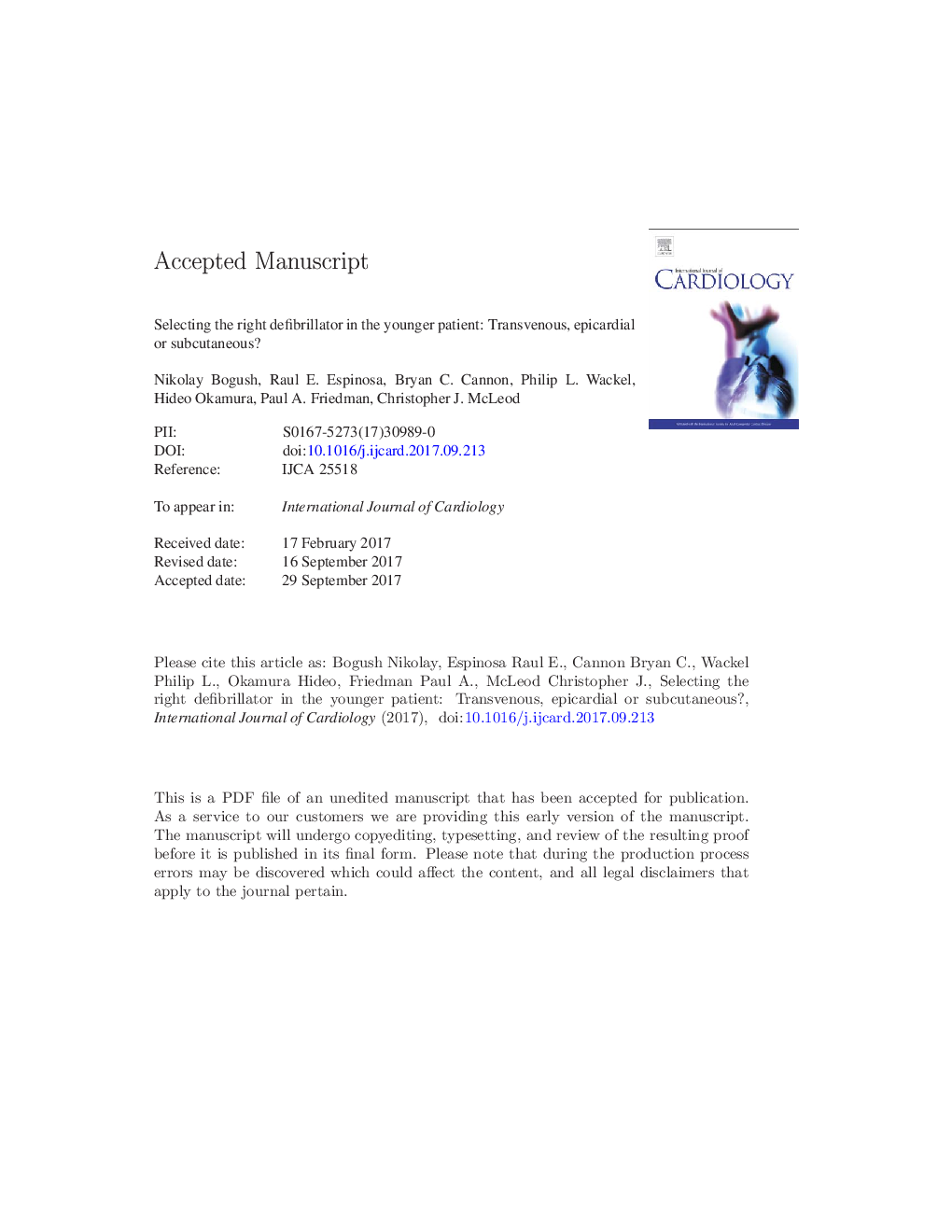| Article ID | Journal | Published Year | Pages | File Type |
|---|---|---|---|---|
| 8662735 | International Journal of Cardiology | 2018 | 18 Pages |
Abstract
The advent of the subcutaneous implantable cardioverter-defibrillator (SQ-ICD) provides an alternative to transvenous and epicardial ICD therapy. Particularly germane to the young patient with congenital heart disease or inheritable arrhythmia syndromes, the SQ-ICD may be ideal for those who do not require permanent cardiac pacing. The serious complications associated with transvenous ICD systems are largely driven by the intravascular components of these devices and are avoided by this extravascular technique. Multiple clinical trials have shown that SQ-ICDs are effective in detecting and terminating ventricular arrhythmias, yet nuanced issues must be considered, especially in the context of congenital cardiovascular anomalies. This review aims to contextualize the role of this technology in contrast with traditional ICDs, and provide a logical approach to appropriate device selection.
Related Topics
Health Sciences
Medicine and Dentistry
Cardiology and Cardiovascular Medicine
Authors
Nikolay Bogush, Raul E. Espinosa, Bryan C. Cannon, Philip L. Wackel, Hideo Okamura, Paul A. Friedman, Christopher J. McLeod,
